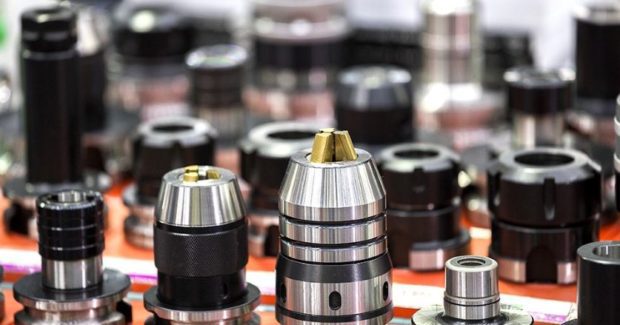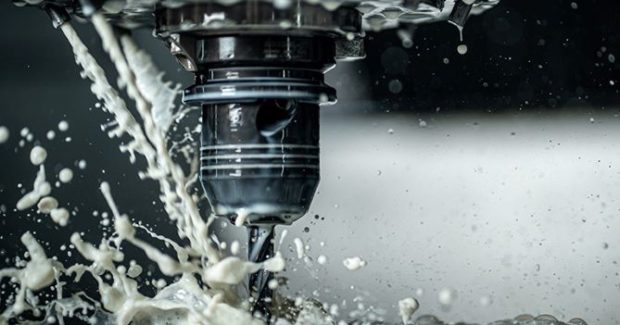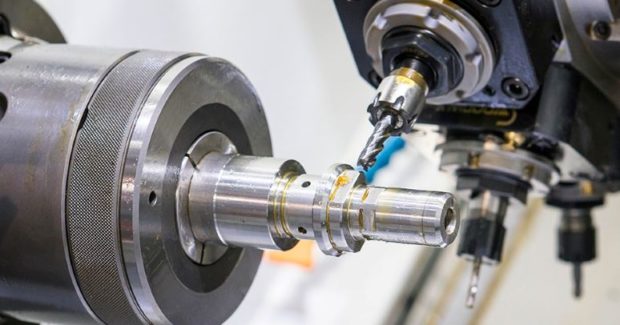Cutting Fluid Recycling Systems
Keep operations running smoothly and extend tool life with improved fluid maintenance programs.
Posted: September 15, 2021
SMOOTH OPERATIONS
By Mike Hook
Throughout the process of metalworking and parts manufacturing, the sheer number of processes and moving parts can make it difficult to figure out how to best streamline your operation. Purchasing high-quality cutting tools and sticking to a consistent schedule of preventative maintenance are vital, but it’s also important to keep in mind the quality of your cutting fluid.
Cutting fluid plays a large role in maximizing the life of your tools. It provides lubrication and removes heat from the work zone, making it easier on tools and preventing them from exceeding critical temperature ranges during cutting.
Without cleaning and recycling, coolant is liable to break down over time, leading to damage to machine tools in a number of ways:
- Lubricity becomes less effective
- Abrasion occurs on equipment surfaces
- Rust and corrosion damage machine parts and interiors
- Tramp oil mist settles on equipment, resulting in mechanical failures and prematurely clogged air filters
When coolant fails to properly lubricate a cutting tool, that tool softens, wears out more quickly, and can dull or even break during the first cut.
By ensuring that your fluid is properly and frequently cleaned, you can see benefits that not only allow you to get the most out of your tools, but also extend to the quality of your finished product, the condition of your machining equipment, and the health of your workforce.
These aren’t negligible benefits either. Case studies have shown that the use of effective cutting fluid recycling equipment can extend tool life by as much as 25%. When a manufacturer of metal aerospace components implemented a centralized cutting fluid recycling system at its facility in the Pacific Northwest, it saw a major increase in average tool life:
- 209% for drills
- 78% for turning tools
- 66% for form tools
- 47% for boring tools
- 26% for reamers
Additionally, the manufacturer saw surface finish quality increase by 27%, machine downtime decrease by 50% and tool resharpening costs cut in half.
Ensuring that cutting fluid is clean and healthy means tools will last longer and produce better results. Because of this, operations both large and small can cut back on replacement costs for new tools. It’s common practice for metalworking facilities to purchase tools prematurely in order to avoid production downtime or tool shortages. But a stockpile of tools not yet in use represents a substantial amount of money tied up, potentially unnecessarily, instead of earning a return on investment somewhere else.
By extending tool life, cutting fluid recycling systems reduce the need for preventative purchasing of replacement tools, freeing up capital to be devoted elsewhere and cutting down on production downtime and installation costs. You can maximize your bottom line by extending tool life and improving product quality all at once.
HOW DO CUTTING FLUID RECYCLING SYSTEMS WORK?
Fluid recycling equipment takes the burden off your workforce by automating the processes of separating solids from liquids, filtering out dispersed contaminants like bacteria and tramp oil, and adjusting fluid concentration for fluid recovery.
This keeps cutting fluid working longer. A proper filtration and recycling system extends cutting fluid life by two to five times beyond typical change-out periods. This means you can significantly cut back on the costs of purchasing new coolant and reduce the labor associated with coolant replacement and sump maintenance.
In conjunction with some types of newer cutting fluids, recycling systems can almost endlessly clean and refresh the fluid, meaning that tools can benefit from healthy coolant and coolant disposal can be avoided almost entirely.
The benefits of a cutting fluid recycling system aren’t limited to extending tool life and reducing cutting fluid costs. Proper cleaning of cutting fluids significantly reduces the amount of tramp oil and bacteria present in the work zone.
The breakdown of cutting fluid can even damage some machine parts that aren’t involved in the cutting process. The interiors of the cutting machines themselves become prone to rust and corrosion and sensitive electric components are known to be damaged by mist created by tramp oil. When present, tramp oil mist also settles on equipment, resulting in potential machine failures and clogged air filters.
Just as tramp oil is harmful to equipment, bacteria are harmful to your workforce. The presence of bacteria is one of the biggest fears in metalworking facilities because it generates unpleasant smells and leads to dermatitis, reducing both the morale and productivity of workers.
Keeping coolant healthy eliminates the threats of tramp oil mist and bacteria growth, meaning machines and employees alike will be healthier and happier.
When it comes to cutting fluid recycling systems that can extend tool life, there are a variety of options:
Centralized Coolant Recycling Systems
Centralized coolant recycling systems remove tramp oils and suspended solids from contaminated coolant, control bacteria, and can adjust fluid concentration for fluid recovery. Bottom line benefits of adding a centralized system include reducing new fluid purchase costs by up to 75% and reducing hazardous waste disposal costs by up to 90%. By injecting ozone, utilizing a coolant manager in conjunction with a centralized recycling system can prevent coolant rancidity. These recycling systems can extend tool life and help a shop reduce new tool purchases by 25%.
Standard and Magnetic Paper Bed Filters
Paper bed filters can extend tool life by an average of 27% and improve surface finish. Additionally, they can prolong coolant life by removing solids and other materials from all free-flowing industrial process liquids. Standard paper bed filtration systems are available with flow rates up to 130 GPM and different classes of filter fabric. This allows for adjustments of micron clarity to achieve optimal removal of ferrous and non-ferrous metals as well as organic and inorganic contaminants, such as dirt, glass, rubber and plastic.
Magnetic Separators
Magnetic separators also prolong tool life and are well-suited to processes where ferrous contaminants are mixed with water-based coolants or straight cutting oils. They employ high-intensity ferrite or rare earth magnets within a fully energized rotating drum to continuously remove ferrous particles from the flow of liquid, which can reduce machine downtime by up to 50% — a major contributor to a healthy profit margin. These systems are often used as a pre-filter to limit contaminants reaching subsequent filtration equipment.
Drum-Type Scraper Separators
Drum-type scraper separators extend the life of cutting tools and provide cleaner surface finish through high-quality separation of aluminum, non-ferrous and composite materials. These units also increase coolant life, reduce new coolant purchases, and increase coolant pump life cycle by reducing the risk of coolant lines clogging.
Solid Bowl Centrifuges
Solid bowl centrifuges prolong coolant life resulting in longer tool life and improved surface finish of the component part. This industrial centrifuge effectively separates solids from liquids in metal processing applications where removal of fines is important to recycle and reuse goals. It provides high-performance liquid/solid separation for all types of particles including metallic, ferrous, non-ferrous, and non-metallic solids. Centrifuges are available in styles that are self-cleaning or manually cleaned.
Vacuum Filtration Systems
Vacuum filtration systems extend tool life by eliminating high sludge volume produced in machining centers and grinding applications. Systems range from standard off-the-shelf units to custom-engineered designs, with filtration capabilities up to 3,000 GPM for efficient, high volume fluid filtration.
Candle Filters
Candle filters extend tool life by removing fine particulate from spent oil in honing and EDM applications, and in Tungsten carbide tool and steel ball grinding applications. This filter uses media in a long cylinder that houses more than 10,000 thin membrane wafers. These membranes capture grinding swarf at 1 micron and operate with virtually no downtime for maintenance.
Tramp Oil Separators
Tramp oil separators automatically remove free-floating and mechanically dispersed tramp oils, bacteria, slime, inverted emulsions, and more from individual machine sumps, central systems, and wash tanks with tramp oil separators. This equipment eliminates the need to have employees manually vacuum oil from the rinse tanks or machine sumps and can reduce tramp oil to less than 1% in a single pass. Additional benefits include reducing new fluid purchase costs up to 75% and reducing hazardous waste volumes up to 90%.








